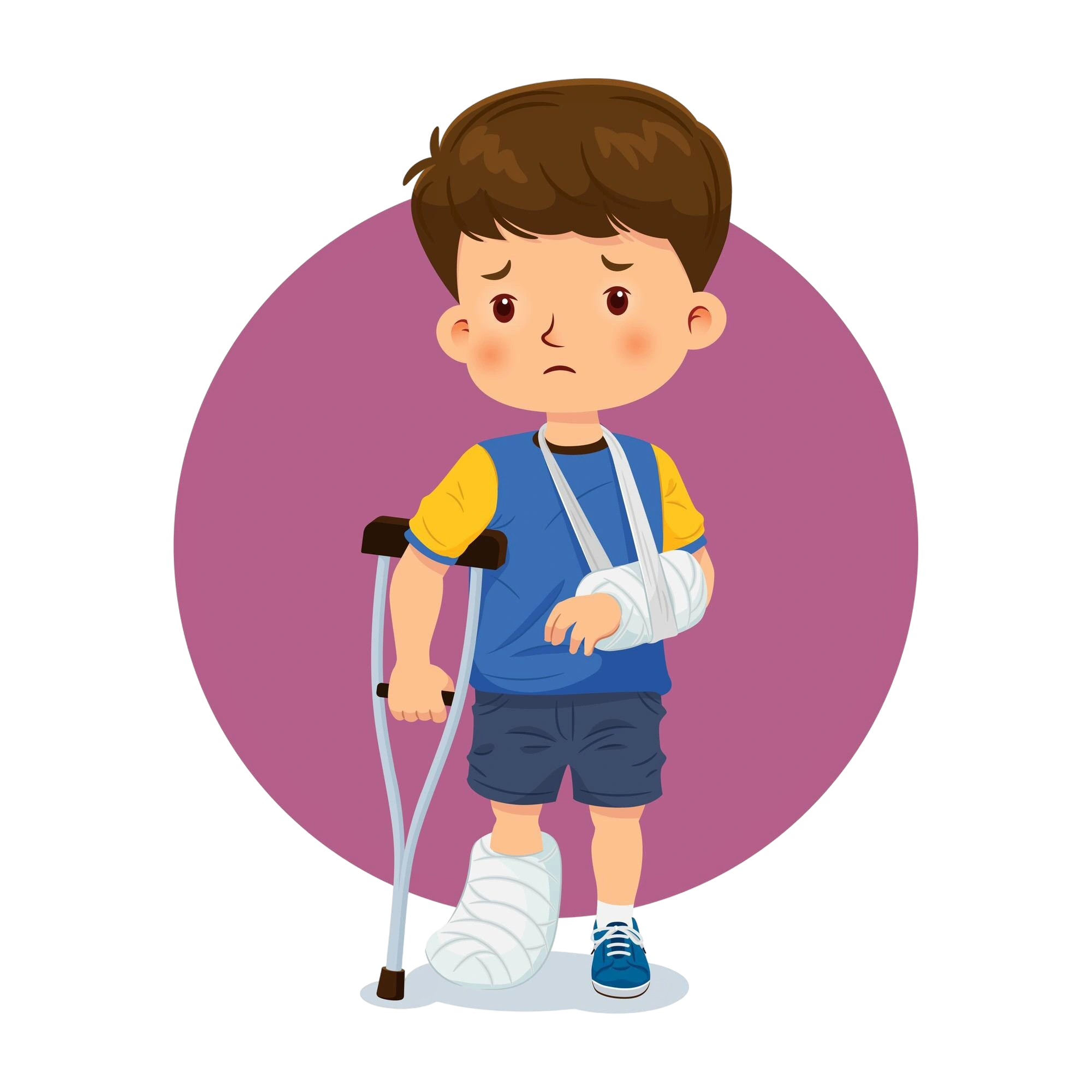When a child falls or injures themselves, a parent’s first reaction is usually panic — and understandably so. But the first few minutes after the injury can make a huge difference in how well your child recovers.
As a pediatric orthopedic surgeon, I often tell parents that knowing the right initial steps and precautions can prevent complications and ensure proper healing.
Here’s a simple, practical guide on what to do if you suspect a fracture in your child.
1. Recognize the Signs of a Possible Fracture
Every fall or injury doesn’t result in a fracture, but it’s important to know the tell-tale signs.
Watch out for:
- Sudden, severe pain and swelling
- Visible deformity or abnormal bend in the limb
- Difficulty moving or using the affected part
- Refusal to bear weight (in case of leg injury)
- Bruising or tenderness over the injured area
👉 If your child shows more than one of these signs, assume it could be a fracture — and act quickly but calmly.

2. Do Not Try to Straighten or Move the Limb
This is one of the most common and dangerous mistakes.
Never attempt to:
- Pull, twist, or massage the injured area
- Forcefully remove tight clothing
- Check movement by bending the limb
Doing so may worsen the fracture, damage the growth plate, or injure surrounding muscles and blood vessels.
3. Immobilize the Injured Part Gently
Until you reach a doctor, your goal should be to keep the limb stable and supported.
Here’s how:
- Use a splint (a folded magazine, cardboard, or a straight stick wrapped with cloth) to keep the limb from moving.
- If a fracture is suspected in the leg, avoid making the child walk.
- In case of hand or arm injury, support the limb with a sling using a dupatta or scarf.
This simple step prevents pain and protects the fracture from displacement.
4. Apply Ice Packs to Reduce Swelling
Wrap ice cubes in a cloth and apply gently for 10–15 minutes every hour.
Do not apply ice directly on the skin.
Ice helps in reducing swelling, pain, and inflammation before medical help arrives.
5. Manage Pain Safely
If your child is in severe pain, paracetamol or ibuprofen (in appropriate pediatric dose) can be given, unless contraindicated by a doctor.
Avoid strong painkillers without medical supervision.
6. Control Bleeding (if any)
If there’s an open wound or bleeding:
- Apply gentle pressure using a clean cloth or sterile bandage.
- Do not clean deeply or insert anything inside the wound.
- If bone is visible, cover loosely and rush to an orthopedic emergency.
7. When to Rush to a Hospital Immediately
Seek urgent medical help if you notice:
- Visible bone or open wound
- Uncontrolled bleeding
- Child is pale, dizzy, or fainting (signs of shock)
- Fingers or toes below the injury appear cold, bluish, or numb
- Injury around elbow, knee, or hip joint — these areas are high-risk for growth plate injury.
8. The Right Specialist for Your Child’s Fracture
Fractures in children are not “smaller versions” of adult fractures.
Because children’s bones are still growing, only a pediatric orthopedic surgeon understands how to:
- Protect the growth plate (physis)
- Ensure proper alignment for future growth
- Minimize long-term deformity
- Avoid unnecessary surgical intervention when conservative care can work
9. What Not to Do (Common Mistakes)
❌ Applying oils, herbal pastes, or home remedies
❌ Visiting non-medical “bone setters”
❌ Ignoring minor swelling or pain that persists beyond 24 hours
These can all delay diagnosis and lead to long-term complications like malunion (improper bone healing) or deformity.
Conclusion
When your child gets injured, remember: your calm and informed response can change the outcome.
Quick recognition, proper immobilization, and early consultation with a pediatric orthopedic specialist ensure the safest and fastest recovery.
If you ever suspect your child has a fracture, reach out to an expert pediatric orthopedic surgeon immediately for assessment and guidance.
